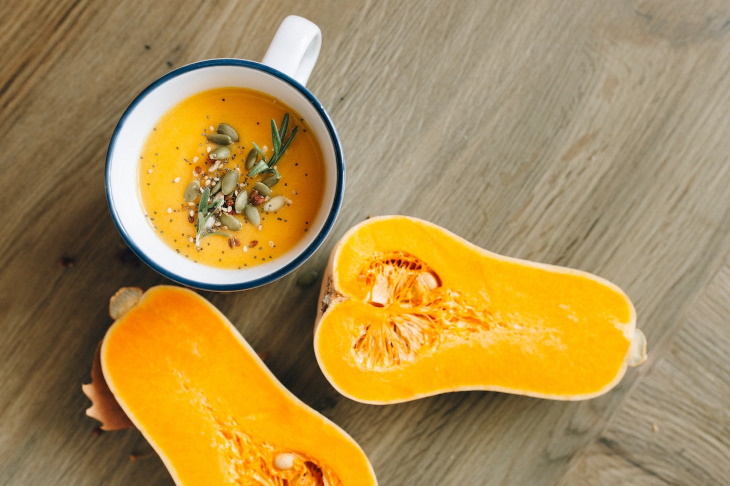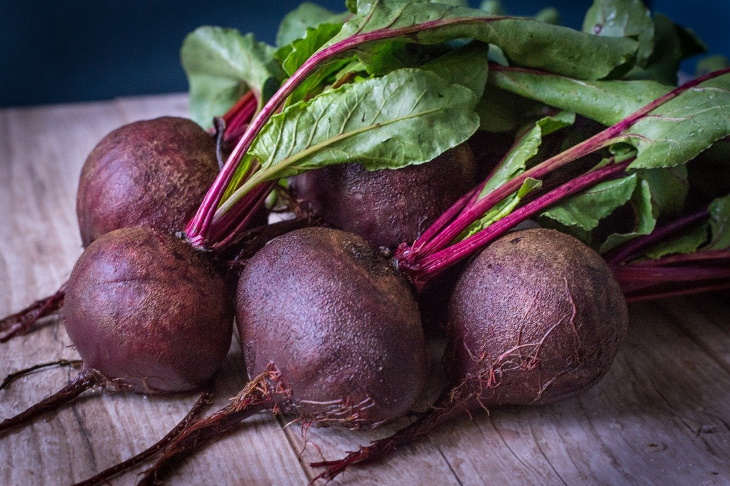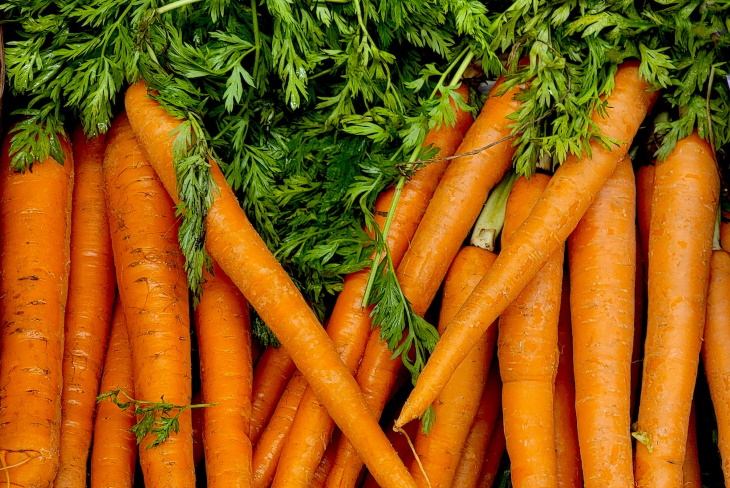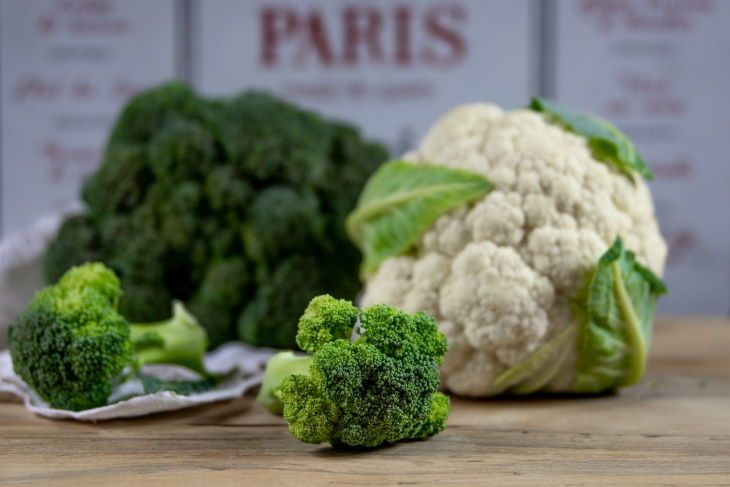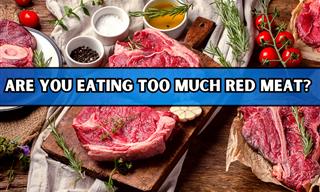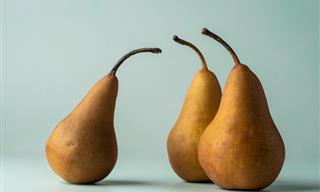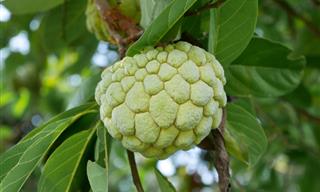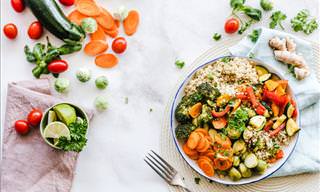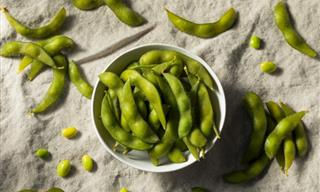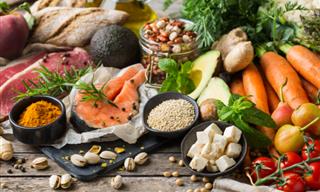We hear it everywhere - eating more vegetables and other fresh produce is the key to a healthier, happier life. But who wants to be hungry an hour after a meal? If you’re looking for vegetables other than potatoes that will keep you full and satisfied for hours after eating them, look no further than this list of delicious, filling vegetables. We also link several recipes with these 10 vegetables for your convenience.
Note: The key to fresh produce being satiating is fiber, as it helps fill up the stomach and slow down digestion, thereby reducing your appetite. Hence, we’ll be discussing the fiber content of these vegetables quite a bit. Remember that you should aim for 25-30 gr of fiber every day if you’re a woman and 30-35 gr if you’re male. It’s also a great idea to combine vegetables with food groups rich in protein and fat.
Edamame
Shelled, steamed edamame is an excellent quick snack that’s healthy to munch at any time of the day, including late at night. Steam or boil a cup of edamame, drain, add salt, and you’ve got a delicious, filling snack.
Edamame is a real protein powerhouse, with just 1 cup of these beans containing a whopping 17 grams of protein. In case you didn't know, edamame beans are essentially young soybeans, and so like all soy products, it is rich in folate, antioxidants, vitamin K, and healthy fiber. 1 cup (about 155 g) of edamame will provide you with 180 calories.
Pumpkin and butternut squash
Since pumpkin and butternut squash are high in fiber, they will fill you up right away. Just 1 cup of pumpkin contains 7 grams of fiber and only 50 calories. Pumpkin and butternut squash are incredibly nutrient dense too - containing tons of vitamin A, K, and E, and minerals like copper, iron, and magnesium.
Best of all, there are tons of ways to enjoy these two types of squash. If you’re short on time, bake them to soften in the oven and enjoy topped with maple syrup and nuts or seeds. On days when you have more time, prepare a bowl of Butternut Squash Cream Soup or even a Pumpkin Pie.
Zucchini
Zucchini is another incredibly versatile fiber-rich vegetable. Per serving, zucchini contains 3 gr of fiber and 4 gr of protein. Many people just add cubed fresh zucchini to a protein smoothie in place of a banana, and this is certainly the easiest way to enjoy this vegetable.
However, you can also prepare a delicious Creamy Zucchini Soup or even oven-baked Zucchini Fries with this wonderful vegetable.
Asparagus
Asparagus is mainly water - the water content of this vegetable is 92.6%. So, you may think that it’s not particularly filling. However, this vegetable has a high fiber content - just 7 asparagus spears (around 100 gr) have 2 gr of fiber - so it’s actually quite filling.
Apart from that, asparagus is packed with potassium - a nutrient that aids the body in clearing away sodium and water. This way, asparagus can help reduce or prevent bloating. To prepare asparagus, just pan-roast it for 10-15 minutes in some olive oil and garlic, and you’re done. This veggie also plays well in vegetable stews, stir-fries, and risotto.
Beetroot
You’re surely aware that beets are amazingly healthy. After all, the pretty red vegetable is packed with vitamins, minerals, and fiber. Eating meals that contain beetroot is a delicious way to fill up your stomach without weighing it down. Just 1 cup of beetroot will provide you with just 59 calories, so you’ll be full without adding many calories to your meal.
The easiest way to enjoy beetroot is by whizzing it up in a blender into a smoothie or preparing a beet-based salad. Here are two delicious recipes you can check out:
- Apple Carrot Beet Smoothie
- Summer Beet Salad.
Carrots
If you’re looking for a simple but filling vegetable snack, you don’t have to spend hours cooking. Just peel a carrot, chop it up, and enjoy. Feeling a bit fancier? Dip the carrots in 1-2 oz of hummus, and you’ll have yourself a super satisfying plant-based snack.
Carrots are not just filling because they’re full of fiber, they’re also crunchy, so eating them will satisfy your munchies. Carrots are also sweet without containing sugar. If you have 1 serving of carrots (around 1/2 cup) a day, you’ll get 4 grams of fiber, but only 50 calories.
Brussels sprouts
Brussels sprouts are a known weight loss food. Roasting them in the oven cooked with a splash of olive oil and spices makes such a delicious and filling side dish. Apart from having 2.6 gr of fiber per 1/2-cup serving, Brussels sprouts contain 2 gr of protein, vitamin C, and other antioxidants.
If you experience bloating after eating Brussels sprouts, cook them beforehand. Cooking them with olive oil also makes them easier to digest. "Brussels sprouts can be more filling and nourishing when prepared with olive oil, as the nutrients become more bioavailable," says Maya Feller, a registered dietitian for Eating Well.
Cauliflower and broccoli
Two relatives of Brussels sprouts - cauliflower and broccoli - are also magnificent versatile and filling vegetables. 1 cup of chopped cauliflower will provide you with 2.3 gr of fiber and broccoli will give you even more - 2.6 gr. They also contain up to 4 g of protein and plenty of vitamin C, K, and folate.
While broccoli is best enjoyed fresh in a salad or stir-fried, cauliflower can be enjoyed in a variety of ways. You can mash it up and make Cauliflower Crust Pizza or prepare these delicious Cauliflower Fritters, for example.
Artichoke
When it comes to fiber-rich vegetables, nothing can come nearly close to artichoke. One 100-gram serving of artichoke contains a whopping 5.7 gr of fiber. This means that just 1 large French artichoke will nearly fulfill half of a day’s fiber needs while costing you just 76 calories. Artichokes also have a diuretic effect, helping you with bloating and fluid retention.
The specific type of fiber in artichokes is called inulin, which acts as a prebiotic and supports healthy gut bacteria. This is very important for your feeling of fullness, as a healthy gut is more likely to balance hormones that regulate satiety and hunger. Not sure how to use artichokes in cooking? Try out this Artichoke Leek Frittata recipe.
Avocado
If you want to make any dish more filling in an instant without compromising its nutritional content, just add some avocado. 3/4 cup of sliced avocado will provide you with 6.7 gr of fiber, and it contains fats that make it even more filling. To give you some perspective, this means that half of an avocado will fulfill 25 percent of your recommended daily fiber intake.
The many other benefits of this creamy vegetable are impossible to ignore too, as it contains 20 different vitamins and minerals. Vitamin B6, C, and E, as well as folic acid, potassium, magnesium, lutein, beta carotene, and omega-3 fatty acids.
Notably, avocados are incredibly versatile too! You can add them to a smoothie, mash ‘em up and smear them on toast, or cut them up and add them to a salad. But if you want to be a bit fancier, here are two creative recipes you can check out: Avocado Bacon and Eggs and Avocado Chocolate Chip Cookies.
H/T: The Healthy, Eating Well, Eatthis, Healthline
 Go to BabaMail
Go to BabaMail



